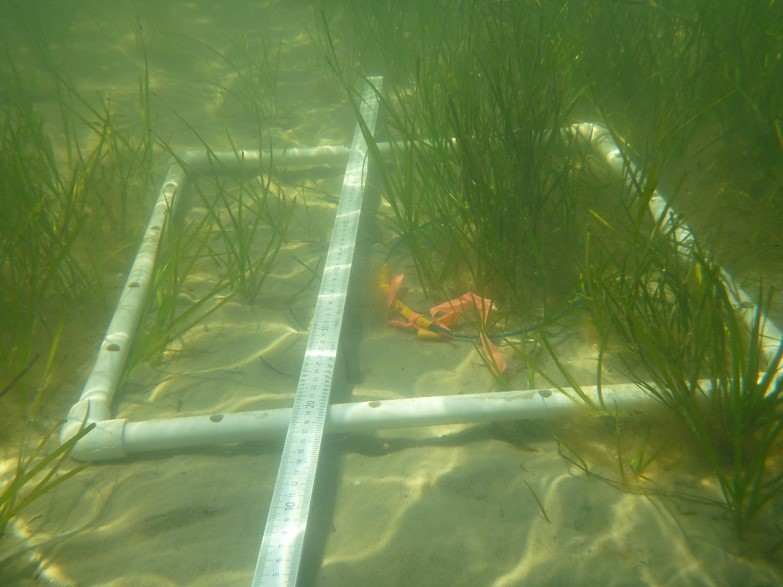Biological Monitoring
Sentinel Site Initiative and Biological Monitoring
CBNERR-VA staff participate in the field monitoring of submerged aquatic vegetation (SAV) and emergent wetlands within reserve boundaries. Reserve components serve as sentinel sites for detecting and understanding the effects of water quality and climate related stressors on critical estuarine habitats; focal habitats at CBNERR-VA include underwater seagrasses, tidal marshes and the marsh-upland forest ecotone. Associated field efforts follow standard NERRS habitat monitoring protocols and include: (1) annual (peak growing season) measurements of marsh surface sediment accretion (method: feldspar plots) and elevation changes (method: surface elevation table); (2) multi-year monitoring of marsh vegetation community types and biomass; (3) marsh groundwater dynamics and pore water salinity; (4) monthly monitoring of SAV community species composition, estimates of % cover, and biomass; and (5) routine surveying activities to maintain local vertical control networks.
Emergent Wetlands
Fixed transects within emergent wetland vegetation have been established at each of the reserve components in order to measure plant diversity over time and a function of salinity regime.

SAV monitoring
Initiated in 2004, fixed transects located within SAV beds at Goodwin Islands and Gloucester Point are monitored in order to quantify SAV inter-annual variability in shoot density and distribution and identify any relationship to water quality. SAV transect monitoring occurs on a monthly basis, typically from April through October.
SeagrassNet
Since 2009, CBNERR-VA has worked in partnership with the National Park Service Northeast Coastal and Barrier Network (NCBN) and SeagrassNet, a global monitoring program, to monitor the seagrass beds adjacent to Assateague Island National Seashore in Chincoteague Bay. Threee fixed transects are monitored every April, June and October in order to detect and monitor seagrass habitat changes and relate them to environmental trends.
Links!
Published papers that involve Goodwin Islands SAV biomonitoring data
- Recovery Dynamics of the Seagrass Zostera marina Following Mass Mortalities from Two Extreme Climatic Events - Estuaries and Coasts, 2021
- Adaptations by Zostera marina Dominated Seagrass Meadows in Response to Water Quality and Climate Forcing - Diversity, 2018
- Short-Term Temperature Stress Results in Seagrass Community Shift in a Temperate Estuary - Estuaries and Coasts, 2019
- High temperatures cause reduced growth, plant death and metabolic changes in eelgrass Zostera marina - Marine Ecology Press Series, 2018
Published papers that involve emergent wetlands data
- Pattern and scale: evaluating generalities in crab distributions and marsh dynamics from small plots to a national scale - Ecology, 2019
- Evaluating Tidal Wetland Restoration Performance Using National Estuarine Research Reserve System Reference Sites and the Restoration Performance Index (RPI) - Estuaries and Coasts, 2018
- Assessing tidal marsh resilience to sea-level rise at broad geographic scales with multi-metric indices - Biological Conservation, 2016
